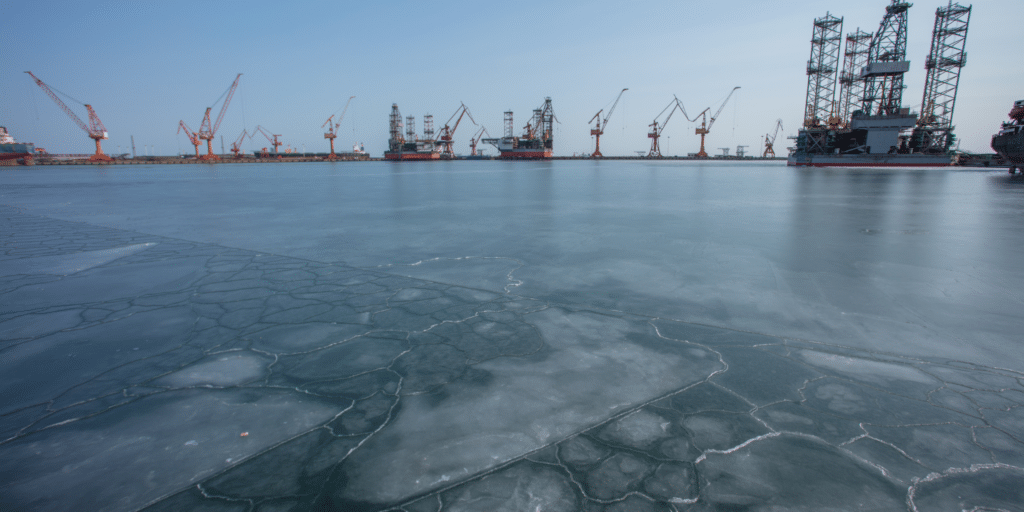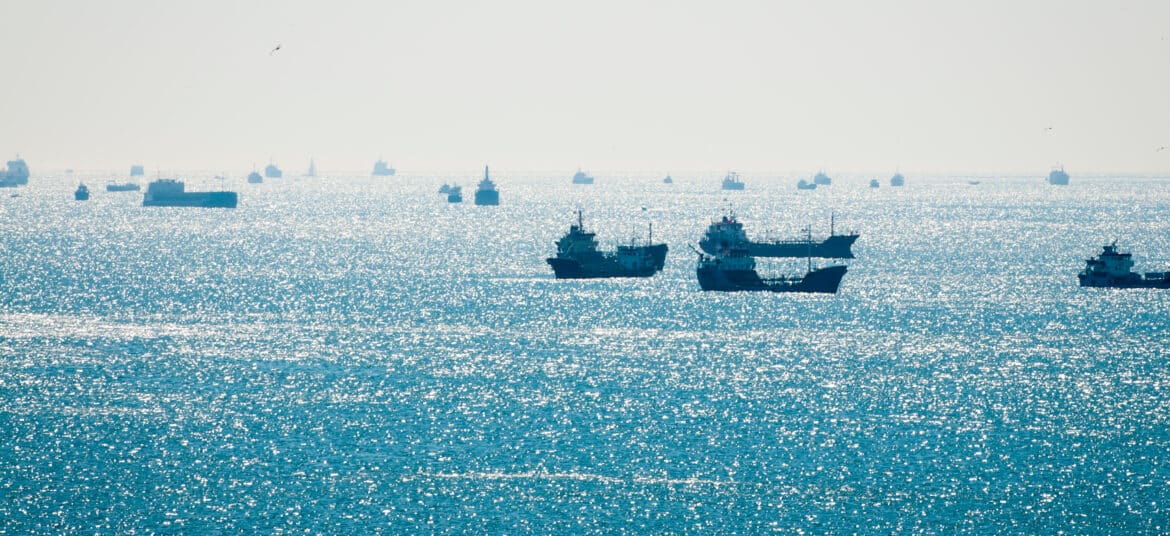Updated on January, 2024
According to the United Nations Conference on Trade and Development (UNCTAD)’s latest update, global trade represents approximately $31 trillion in 2023. It’s about 5% down compared to 2022’s record level. Knowing that around 90% of goods are carried by ships around the globe, shipping activity has significantly increased. As a result, cargo volume and vessel traffic broke records in all major ports.
What are key factors contributing to global trade growth in 2023?
After the downturn in the global economy caused by the COVID-19 pandemic, the trade of goods and services has shown substantial expansion in 2022 and 2023 in both developing and developed countries. For goods, figures have declined by nearly $2 trillion in 2023. These figures are particularly noteworthy given the ongoing conflict in Ukraine and the residual effects of the pandemic, which came with challenges, but also created opportunities:
- diversification of suppliers from other countries due to local sources’ inability to respond to the demand;
- consumers shifting to online purchases during shutdowns, pushing up e-commerce;
- higher demand for medical supplies and equipment,
- stimulus measures implemented by several governments to support their economies.
Which ports broke volume records in 2022?
All the above factors have led to strong growth in maritime traffic. In 2022, UNCTAD reports an overall shipment volume of 12 billion tons, including containerized cargo, RO/RO, and bulk (dry bulk and liquid bulk). Major ports around the world set annual box records. Below are some of the most striking examples.
In the United States
The Port of Los Angeles (POLA) in California’s 25 cargo terminals moved almost 8.7 million TEUs in 2023, almost 13% less than in 2022.
It represents 20% of all incoming cargo for the United States. Gene Seroka, its Executive Director, says that this volume is the second highest in POLA’s 115-year history.
The same goes for the Port of New York and New Jersey on the United States East Coast has experienced a decline in 2023. Its six container terminals have handled 7.8 million twenty-foot equivalent units over the 12 months. This represents a 4.4% rise from pre-pandemic.
Some of the busiest seaports in the US also show a decline. Another Californian port, the Port of Long Beach (POLB) handled 3.2 TEUs during the first months of 2023, which is almost a 25% decrease from the same period the year before. In the total year, the port of Long Beach handled an average of 7.3 million TEU.
Mario Cordero, Executive Director of POLB, declares an annual trade value of $200 billion.
- To a lesser extent, the port of Houston processed about 3.2 million TEU in 2023. With a record in October with a 6% increase compared to October 2022.
- The port of Savannah handled 4.9 million TEU in 2023: a 16% decline from 2022. This port remains one of the biggest and most important ports in the US.
- The Port of Oakland, California (2.4 million TEUs).
In Canada

In Canada, Sept-Îles port (Quebec) had its most successful year since its creation in 1999, after a record of 33.4 million tons handled in 2022, it’s now a record of 36.6 million tons handled in 2023. It’s a 9.58% increase in one year. This substantial level of activity consolidates its position as the 3rd-largest Canadian port in terms of volume of cargo handled, behind Vancouver and Montreal. It’s President and CEO is thus very confident that this port situated on the Saint Lawrence river seaway can exceed the milestone of 40 million tons, which would be a historical record. The number one ore port in North America would then possibly rank second in Canada as regards the overall volume of activities.
In Europe
Rotterdam maintained its position as the largest port in the EU in 2022, handling 351 million tons of goods from Q1 to Q3 only. But in 2023, the port of Rotterdam experienced a decline with 329.9 million tons handled during the first nine months.
The Netherlands, Spain, and Italy topped the list of European states with the highest volume of sea freight handled in their major ports, with more than 100 million tons of goods each.
However, other ports achieved noteworthy results. For example, the port of Barcelona has reached a new all-time milestone with 3miliiontwenty-foot equivalents handled from January to November.
Likewise, the Port of Constanta handled 92 million tons of cargo last year, achieving its highest-ever recorded numbers and showing a 21% year-on-year growth (75.5 million tons in 2022).
In Asia
Announcing a total of 39 million 20-foot equivalent units of containers for 2023, after Singapore confirms its position as the world’s largest transshipment port. Such performance makes it the second-busiest port in the world in terms of the number of containers on record. On top of this, it handled 591.7 million tons of cargo over the year. An increase from 2022.
China has remained the biggest hub for the sea freight industry. From January to November 2022, statistics highlight 15.1 million tons of cargo throughput (+8.4% from 2022). Similarly, the 12 main Chinese ports handled 257 million TEUs, resulting in YoY growth of 4.6%.
In India, the five container terminals of Nhava Sheva Port (JNPA) experienced a decrease of 1.85 million TEUs during 2023. The ship calls decreased by 7%.

In Middle East
Saudi Arabian ports saw an increase in cargo handled last year, totaling 280 million tons compared to 237 million tons in 2022. Containers handling also rose by 9%, up to 11.4 million TEUs in 2023. Capacity in Middle East port will grow at 3.5% in five years.
In Africa
Mozambique’s Port of Maputo reports a 16% increase in cargo handled in 2023, hitting a peak of 31.2 million tons compared to 26.7 million tons handled in the previous year. This marked the first time the port handled over 30 million tons of cargo in a single year. Every year, the Port of Maputo establishes a new record.
What is the future of maritime traffic?
Despite the traffic records hit last year, global trade should slow sharply in 2024, in line with the global recession that began in mid-2022. Several negative factors may constrain short-term growth in international trade:
- Persistent inflation that reduces people’s purchasing power and an uncertain economic climate that encourages consumers to adopt more careful spending behavior weakens consumption.
- High energy prices and tightening of financial conditions, because of increasing interest rates, create difficulties for most sectors, leading to decreasing production.
- Geopolitical tensions apart from spillovers from the war in Ukraine, weigh on many economies.
- Change of sourcing strategies (reshoring, near-shoring) resulting from disruptions caused by the sanitary crisis.
- Costly freight rates.
This being said, the market should not change dramatically, and the demand for goods and services shows resiliency in a tense international context. Besides, UNCTAD says that the drop in the value of international trade during the second half of 2022 was partly caused by the subsiding of primary product prices. This means that maritime traffic is expected to remain at high levels over the short and mid-terms. Ports and shipping companies are now better equipped to deal with the challenges brought by the COVID-19 pandemic.
Yet, the international sea shipping industry stakeholders will continue to face multiple challenges. Port congestion, equipment shortages, upward pressure on costs, as well as environmental impacts are recognized as the major issues to tackle. Regulation changes driven by the International Maritime Organization (IMO) and new technologies are crucial to help the sea freight sector and the maritime business as a whole reach ambitious goals in terms of cost-efficiency, service levels, and last but not least, sustainability.
UNCTAD is calling for further efforts from governments, port authorities, shipping companies, and other operators to:
- improve trade flowing by accelerating digitalization and automation and by minimizing restrictions, especially on food, medical supply energy;
- modernize the fleet of vessels to increase carrying capacity and energy efficiency, thanks to digital technologies;
- invest in bigger storage facilities and stock of empty containers
- energy-efficient shipping technologies and an accelerated shift to alternative, low-carbon fuels to cut the carbon footprint of maritime transport.
There is still a long road ahead for all parties involved with an expected annual growth of 2.1% for the 2023–2027 period.

Frequently Asked Questions About Traffic Record
According to the United Nations Conference on Trade and Development (UNCTAD), the busiest ports in 2023, in terms of cargo volume and vessel traffic, broke records in all major ports around the world. Some of the busiest ports in 2023 include:
- Port of Los Angeles (POLA)
- Port of New York and New Jersey
- Port of Long Beach (POLB)
- Port of Savannah in Georgia
- Ports of Seattle, Tacoma, and Washington (Northwest Seaport Alliance)
- South Carolina ports
- Port of Oakland, California,
- Sept-Îles port in Quebec, Canada
- Rotterdam in the Netherlands
- Ports of Barcelona and Constanta
The port with the highest growth in traffic in 2023 was the Port of Rotterdam in the Netherlands.
The Port of Rotterdam is one of the largest and busiest ports in Europe, and its growth in 2023 was attributed to increased trade with Asia and the continued expansion of its container terminal.
According to the United Nations Conference on Trade and Development (UNCTAD), global trade decreased by about 5% from the record of 2022 with approximately $31 trillion in 2023.





